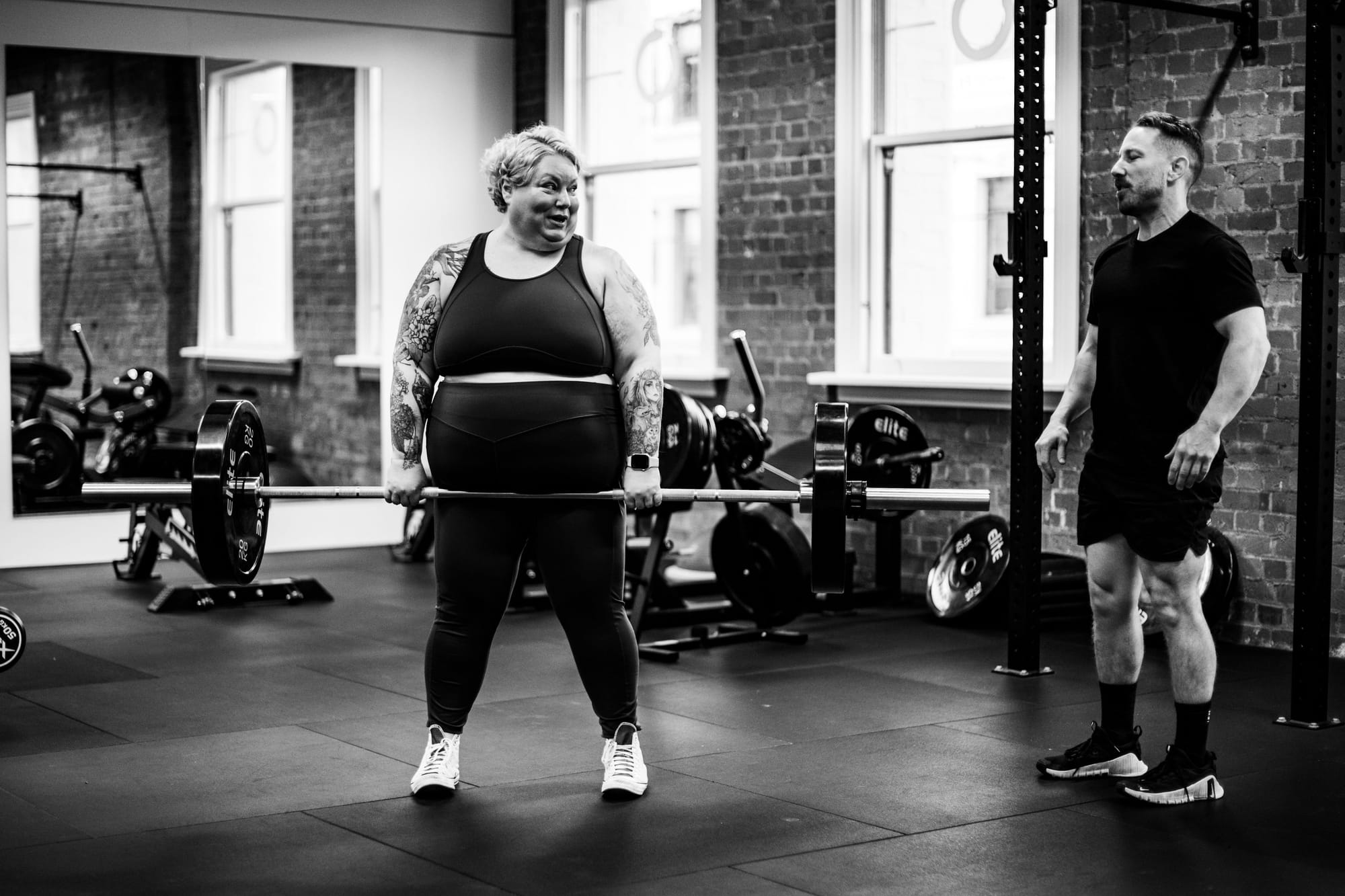Creatine: Worth the Scoop for Gains and Brains?

Carl flying solo today!
I started taking this white powder in my early 20’s, as word on the street was that it really gives you a bump….in the gym. I'm talking creatine (what were you thinking?!).
At the time, it was new, seen as a little risky, and it was pretty unknown. I remember my parents looking at me sideways like I was on PEDs. To be honest, I didn't really know much about it, or think too much about it, as I was young and it was a legal supplement that I believed was going to get me bigger, stronger and more powerful for rugby. When I started taking it I didn't really notice much, but who knows what other factors were at play then! At the time, there was limited research on it, but the theory checked out, as many claimed supplements often do. There were many forms of creatine emerging and I tried a few (again with very limited noticeable results). Then it disappeared and no one talked about it much for many years. Until recently. Now it's everywhere, and all of the popular influencers are talking about it!
Some influencers claim it makes you bald, angry and aggressive, will stunt your growth, and, my favourite, melt your brain if you don't hydrate enough!
So is it worth the reemergence and all of the hype? Where does the body of literature lie, what can we say with confidence and what are the considerations and risks?
Unlike most supplements, it’s been studied for over 30 years in thousands of trials, across men, women, young athletes, and older adults. Mostly in performance enhancement and exercise science, but more recently in cognitive performance and special populations. So, let’s cut through the noise and look at what the science actually says, and where it might be especially relevant depending on who you are.

So what is creatine?
Creatine is a naturally occurring compound found mainly in your muscles and brain. Chemically, it’s similar to amino acids, because your body makes it from the amino acids arginine, glycine, and methionine.
- Where it’s stored: About 95% of creatine is stored in skeletal muscle as phosphocreatine. The remaining 5% is in the brain and other tissues.
- What it does: Phosphocreatine acts as a quick energy reserve. When you’re lifting heavy, sprinting, or doing anything explosive, your muscles use ATP (adenosine triphosphate). Creatine helps regenerate ATP rapidly, so you can keep producing high-intensity effort.
How We Naturally Get Creatine
- From diet: Creatine is found in animal-based foods like red meat, poultry, and fish. A typical omnivorous diet provides around 1–2 grams per day.
- From the body: Your liver, kidneys, and pancreas also produce ~1 gram per day from amino acids.
- Daily turnover: An average adult uses and replaces about 1–3 grams of creatine daily, depending on muscle mass and activity.
Who Might Benefit Most from Supplementation?
- Vegetarians & vegans: Because creatine is mainly found in animal products, plant-based eaters often have lower baseline muscle creatine stores — and typically see a larger performance and cognitive boost when supplementing.
- Athletes: Supplementation raises muscle creatine stores by ~20–40%, giving athletes a bigger “energy buffer.”
- Older adults: Stores decline slightly with age, and supplementation may help with both strength and cognitive resilience.
I am now going to lay out where I think the strongest evidence is, and what the research indicates within each category:
Physical Benefits - Strong evidence
There is a large body of research here, with many high-quality studies (such as human randomised control trials, double blind placebo trials, and some great meta-analysis study reviews). That creates a clearer picture of the benefits in this arena.
- Strength & Power:
Quality: Very strong: dozens of meta-analyses (Branch, 2003; Kreider, 2017; Forbes, 2021).
What it shows: Strength and power improvements of ~5–15% over placebo. Better performance in lifting, sprinting, and repeated bursts.
- Muscle Growth:
Quality: Strong: Long-term RCTs show greater lean mass gains, often +1–2kg over 8–12 weeks (Forbes et al., 2021).
Why: Creatine increases water inside muscle cells (cell volumisation) and allows more training volume.
- Anaerobic/Team Sports:
Quality: Strong: especially for repeated sprint sports (Mielgo-Ayuso, 2019).

Cognitive Benefits - Emerging but Promising
- Brain Energy Buffer: Creatine plays the same role in the brain as in muscles, regenerating ATP for short bursts of energy.
- Under Fatigue: Moderate evidence shows benefits in tasks under stress (sleep deprivation, hypoxia, mental fatigue) — improved working memory and reaction speed (McMorris, 2007; Rae, 2003).
- CBI Research (Creatine for Brain Intervention): Ongoing clinical trials are investigating creatine as a tool for cognitive decline, depression, and neurological conditions like Parkinson’s and ALS. Early findings suggest potential protective effects, but results are mixed and not yet definitive.
- Healthy Young Adults: Results are inconsistent, some studies show small boosts in memory, others show no effect (Avgerinos, 2018).
Other Health & Recovery Findings
- Injury & Recovery: Some evidence creatine reduces muscle damage and aids rehab (Rawson & Venezia, 2011).
- Hydration & Heat Tolerance: Increases intracellular water, possibly improving heat resilience (Kreider, 2017).
- Bone Health: Early evidence that creatine plus resistance training supports bone density in older adults (Chilibeck, 2017).
Male vs Female Considerations
- Baseline Differences: Women typically have ~70–80% of the muscle creatine stores of men (due to lower muscle mass and possible hormonal factors).
- Supplement Response: This lower baseline means women may actually experience equal or greater relative benefits from supplementation (especially in power and cognitive tasks).
- Research Gap: Historically, creatine research has been male-dominated. But newer studies on women (including older women and athletes) are showing strong benefits in strength, lean mass, and even mood regulation.
- Hormones: There’s preliminary evidence that creatine may interact with female sex hormones, for example, enhancing mood and cognition during phases of the menstrual cycle when estrogen is lower (e.g., luteal phase). Research here is still in the early stages.
- Menopause: Because of the above reasons, it is believed that it may be extra beneficial for menopausal women to help combat the mental, cognitive and physical changes associated with menopause, including bone mineral density reduction and sarcopenia (loss of muscle).

Practical Use:
So this is all cool and interesting, but what do I do with it all? Firstly, the most proven form in creatine monohydrate. The OG basic cheap white powder! Avoid other forms of creatine (as they are mostly unproven) and definitely consider this review of the gummies (it was found that many didn't have anywhere near the amount of creatine in them as claimed!).
You don't need to load your creatine (usually done 20g p/d for a week), then 3-5g p/d after. You can just stick with the 3-5g/d and it will just take a little longer to reach ‘saturation point’. This will minimise GI disturbance too. You also don't need to cycle your creatine (4-5 weeks on, 1-2 weeks off), as it is safe to take continuously for the healthy population.
It is not ideal to cook with it as prolonged exposure to heat may degrade the creatine, therefore there will be less of it available afterwards (perhaps a reason why the gummies have less than claimed).
It may help to take with carbohydrates, especially when you are trying to reach ‘saturation point’ quickly but if it's ongoing, it may not have a significant effect.
The idea: Carbohydrate intake spikes insulin, and insulin helps shuttle nutrients (like creatine) into muscle cells. Early studies tested whether taking creatine alongside high-glycaemic carbs would boost uptake - Greenwood et al. (2003).
It can cause GI disturbance in individuals but when doses are reduced, it often subsides. It may be worth considering taking with meals and when hydrated, also to mitigate this effect (based on my clients' observations and responses! Not research).
It seems as if the research suggests that taking slighter higher doses are required for the cognitive benefits 5-25g. The way I apply this is I take 5g per day every day and 20g after a sleep-deprived night.
- Form: Stick with creatine monohydrate. 90%+ of studies use it, and it’s cheap.
- Dose: 3–5g/day or higher for cognitive benefits.
- Timing: Doesn’t matter much — consistency beats timing.
- Side Effects: Small increase in body weight from muscle water retention (0.5–2kg). Rare cases of GI upset with high doses.
- Safety: Long-term studies (5+ years) show no adverse kidney or liver effects in healthy people (Kreider, 2017). Those with kidney disease should seek medical advice first.
The Bottom Line
- It's important to remember that the results of creatine are gradual and small, but still notable, it is accumulative and not instant. So don't expect it to change you overnight.
- For strength, power, and muscle growth: Evidence is solid, and creatine is the most effective legal supplement available.
- For brain health: Evidence is moderate but exciting, especially in fatigue states, clinical populations, and potentially for women. The CBI research will be a big driver of where this goes next.
- For general health: Evidence is emerging, bone density, recovery, and hydration are promising areas to watch.
In short: Creatine is not just for gym bros. It’s safe, effective, and may benefit both gains and brains across men and women, from young athletes to aging adults. Get that white powder in you!
Oh and no! It doesn't make you bald, stunt growth or melt your brain, there is zero evidence to these claims whatsoever!
